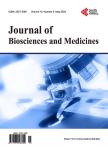Diabetes Mellitus in Very Elderly Russian Patients with Coronary Artery Disease
Diabetes Mellitus in Very Elderly Russian Patients with Coronary Artery Disease作者机构:Department of Hospital Therapy N2 First Moscow State Medical University (Sechenov University) Moscow Russia War Veterans Hospital N3 Moscow Russia
出 版 物:《Journal of Biosciences and Medicines》 (生物科学与医学(英文))
年 卷 期:2020年第8卷第9期
页 面:167-177页
学科分类:1002[医学-临床医学] 100201[医学-内科学(含:心血管病、血液病、呼吸系病、消化系病、内分泌与代谢病、肾病、风湿病、传染病)] 10[医学]
主 题:Diabetes Mellitus Coronary Artery Disease Glucose Hemoglobin A1c Very Elderly
摘 要: Background: Conflicting data are available on prevalence and characteristics of diabetes mellitus in very elderly patients and centenarians;therefore, we evaluated features of this pathology in patients with coronary artery disease (CAD) over 75 years old. Material and Methods: 580 patients with CAD over 75 years old were enrolled in the study on the prevalence of diabetes mellitus. 190 patients with CAD and diabetes mellitus were included in the cross-sectional study of the diabetes mellitus characteristics in old age: 153 very elderly patients (mean age—85.7 ± 4.7 years)—in the main group, 37 patients Results: Diabetes mellitus or impaired glucose tolerance was found in 22.2% of very elderly patients with CAD. Glucose levels in very elderly diabetic patients were lower at all time points than in patients 70 years old. The largest differences were recorded for the blood glucose concentration at 6 a.m. (p = 0.00005). Glucosuria was registered in 29.7% of patients aged 51 - 69 years, while among elderly patients—in 11.1% (p = 0.004). The mean levels of HbA1c were 7.3% and 8.7%, respectively (p = 0.01). Correlation analysis revealed negative correlation between the age of patients and the glucose level (r = ?0.4, p = 0.00002—for 6 AM glucose). The mean body mass in-dex in very elderly patients was 30.8 ± 5.8 kg/m2, in patients 70 years old—33.9 ± 6.5 kg/m2 (p = 0.03). Significant differences between the groups of very elderly and younger patients were registered in terms of triglycerides (1.65 and 3.57 mmol/L, respectively, p 0.00001), HDL-cholesterol (1.16 and 0.87 mmol/L, respectively,



